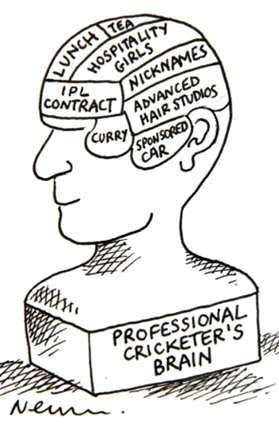Originally posted on March 27, 2018 @ 7:17 PM
Unthinkable

IMAGE SOURCE
Unfortunately in safety the paradigms of behaviourism, individualism and rationalism dominate the worldviews of many. We see this in the way safety people conduct incident investigations and in the curriculum of Work Health and Safety. The idea that humans are influenced by hundreds of social psychological factors that determine decisions based on context is simply foreign and not believed. The idea that people can behave under the influence of a collective unconscious is simply dismissed. Perhaps what is worse, using safety’s own paradigm, they don’t even want to know about it. Lets just keep to specialisations in objects, checklisting and regulation. Safety is simple: tell the rule, police the rule and punish non-compliance. How convenient and comfortable is the binary bubble of safety.
Of course in the real world of fallible humans safety simplicity doesn’t work, zero will never be achieved. Indeed, zero is part of the binary problem. The fact that the Global Congress on Safety endorses zero along with the SIA is testimony to the fact that Safety is trapped within its own small bubble and doesn’t know how to get out. Collective groupthink is cognitive dissonance on a grand scale (https://safetyrisk.net/how-groupthink-works/ ). Safety doesn’t want disruption, it just wants to talk about it. Safety doesn’t want anything differently, it just wants to talk about it. Safety doesn’t want safety 2, it just wants to talk about it. If there is to be any difference the behaviourist, individualist and rationalist ideologies that dominate safety would have to change. This is the vision for safety.
I’m sure when the Australian senior cricket players got together they weren’t ‘thinking’ of anything they were ‘unthinking’. (A read of Chris Paley ‘Unthink’ would be a good start). In a small group of people blinded by anger about sledging, victimization and nasty politics the reaction was about getting even, not rational thought. When someone gets caught in road rage they stop thinking, they get caught up in the social dynamics of the circumstance and do things they would not normally do (Read Caldini ‘Influence’ for a start).
Anger is a blinding influence that disposes of the need for rational thought. Anger is only one of hundreds of social influence dynamics that influence decision making. (http://www.abc.net.au/news/2018-03-24/south-africa-v-australia-david-warner-abused-by-spectator/9583014; http://www.news.com.au/sport/cricket/david-warner-responds-to-sledge-that-sparked-his-altercation-with-quinton-de-kock/news-story/214b3c22f02702723af1269d43c9db94; https://www.smh.com.au/sport/cricket/david-warner-at-heart-of-ball-tampering-scandal-20180326-p4z6d3.html)
Here is a list of the social psychology basics one would need to understand in order to grasp how social influence changes decision making and behaviour:
- Pitch, Frame, Prime, Mirror, Anchor – Reframing
- Valence Framing
- Language Selection
- Social Association
- Focus on Artefacts
- Setting Expectations and Agenda
- Understand Choice, Option and Reaction Formation
-
Understand Homeostasis, By-Products, Trade-Offs, Spin-Offs
-
Constraining Response Options
-
Diversity in Decision Criteria
-
Misdirection
-
Phantom Alternatives
-
Comparison Sets
-
Understanding Flow
-
Metaphor and Semiotics
-
Narratives (setting Meaning and Purpose)
-
Envisioning Vision
-
Questioning Skills
-
Innuendo
-
Understanding Psychology of Goals
-
Understanding Trajectory and Projection
-
Understanding Debias Techniques
-
Committee Works, Lobbying, Coalitions
-
Jig-sawing
-
Social Dilemmas
-
Understanding Altercasts
-
Space and Place, Physical Context
In addition to understanding these dynamics one would also need to understand the dozens of resistance dynamics that influence non-compliance. A read of Dolinski ‘Techniques of Social Influence, The Psychology of Gaining Compliance’ would be a start. However, I am sure that none of these texts either by Paley, Caldini or Dolinski would make the reading list of any WHS curriculum. It’s just easy to keep to the binary worldview that the senior players decided rationally to cheat and were stupid. After all, ‘safety is a choice you make’.
IMAGE SOURCE



Do you have any thoughts? Please share them below